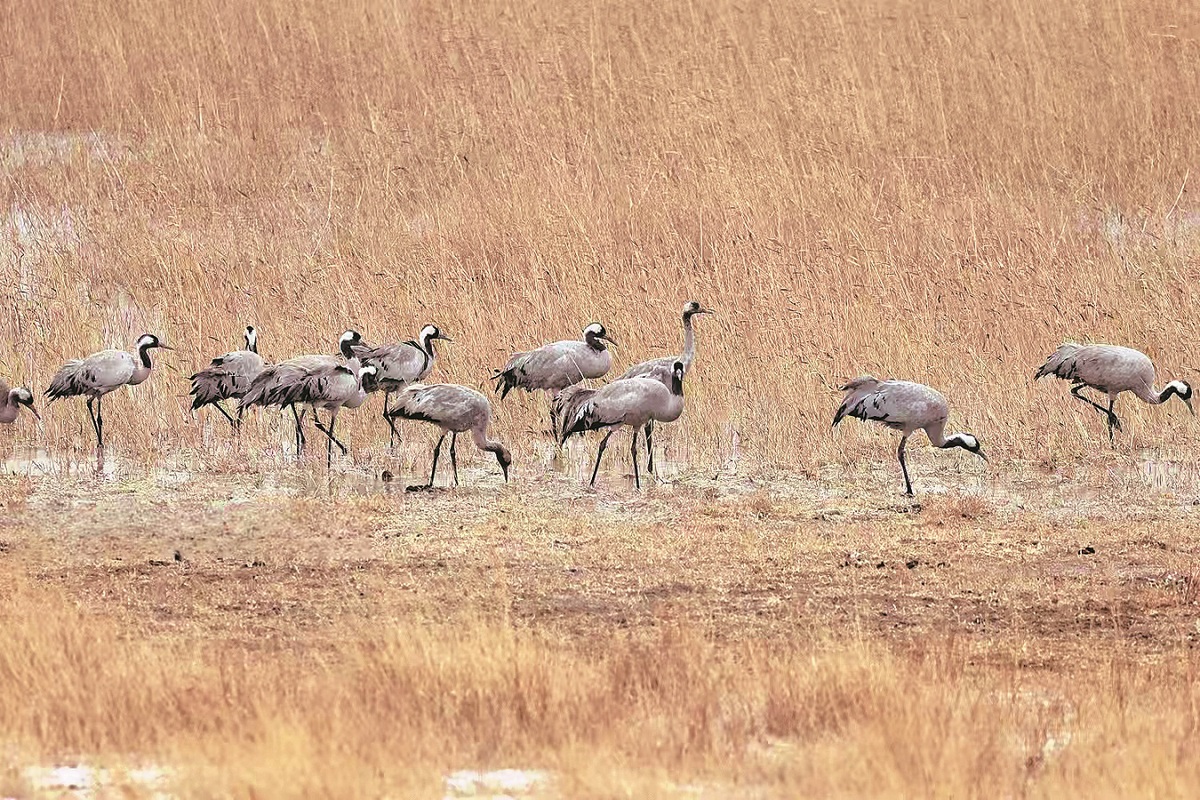Band of brothers battles solitude, wind, searing sun to transform desert
Dedicated rangers in Gansu nature reserve work hard to revive life, ecology


Harsh realities
The reserve was founded in 1993, and Lu became a ranger there in 2011 at age 28.
He said his first task was making the "straw checkerboard". This simple yet remarkably effective Chinese method of sand stabilization involves drying wheat or rice straw and inserting it vertically into the sand to a depth of 15 centimeters, leaving 20 to 25 cm exposed. The grid consists of 1-by-1-meter squares.
The checkerboard traps sand and also captures rainfall. The decaying straw releases nutrients like nitrogen and phosphorus, enriching the soil and fostering plant growth.
Lu recalls waking up early every day to work on the straw checkerboards, continuing until noon when the temperature sometimes soared to 40 C.
"Back then, my workstation — the reserve has four stations in total — was located at the western edge of Er Dun village, a settlement encircled by the desolate Gobi and aptly known as 'the first village of the desert', a name that carries an unmistakable sense of harshness," he said.
Lu said his bungalow was located in the path of the wind." I'd wake up with sand in my mouth — there was simply no way to keep it out, even with the doors and windows tightly shut," he said.
"Every spring, after a winter of howling gales, sand was piled halfway up our bungalow. The trenches we'd dug for planting trees were buried, and it took half a month to clear them. Without that, water — more precious than most things here — would simply run off instead of nourishing the roots."
In 2021, Lu arrived at his current post — Tuliangdao Station — on the northwestern edge of the reserve, which directly faces the forbidding Kumtag, or Kumutage, Desert to its west.
Known for its extreme aridness, massive sand dunes, and proximity to human settlements, Kumtag Desert is a typical shifting-sand desert. Its steady encroachment is believed to have contributed to the disappearance of some major lakes and wetlands that were once part of the West Lake region.
"Nowadays, the entire nature reserve is closed off to human activity," said Lu.
























